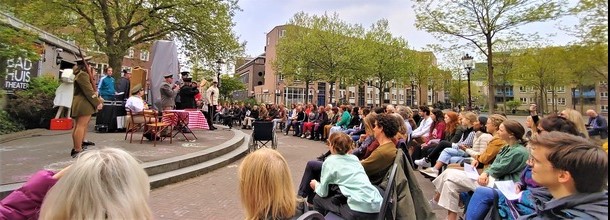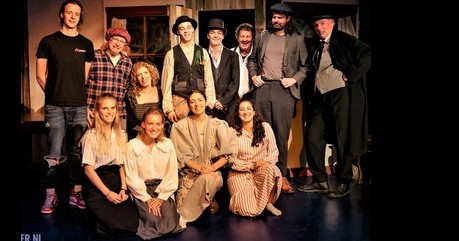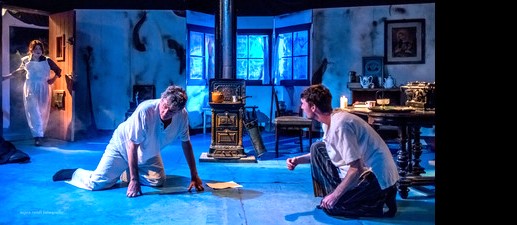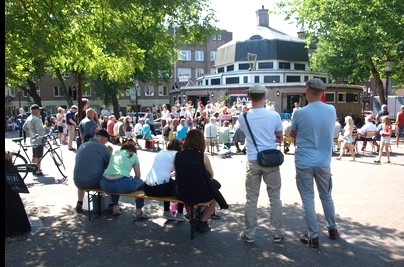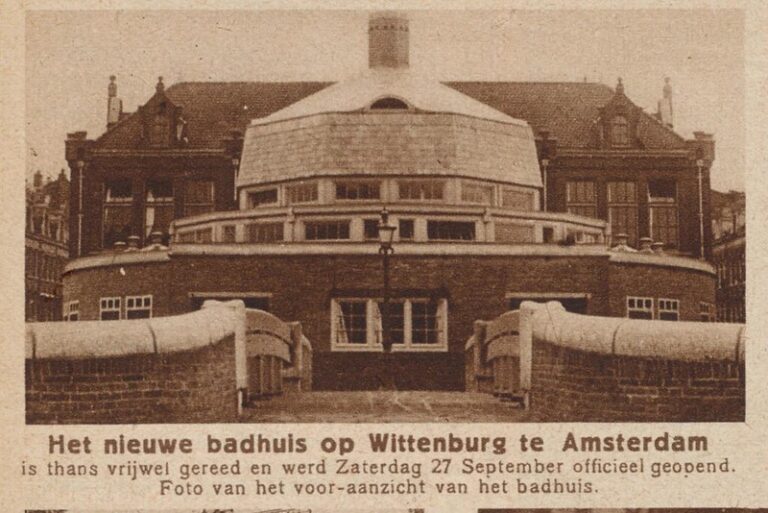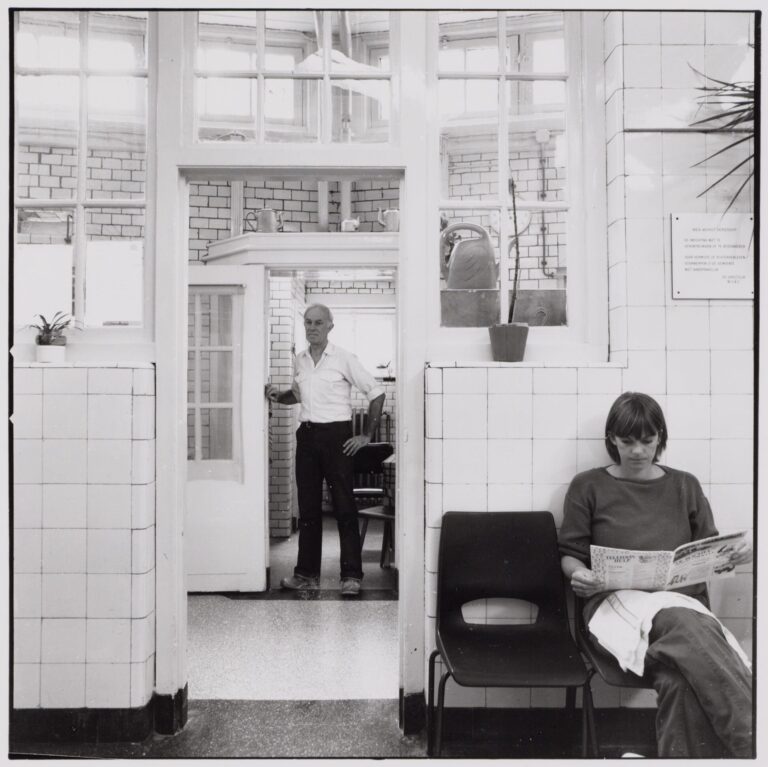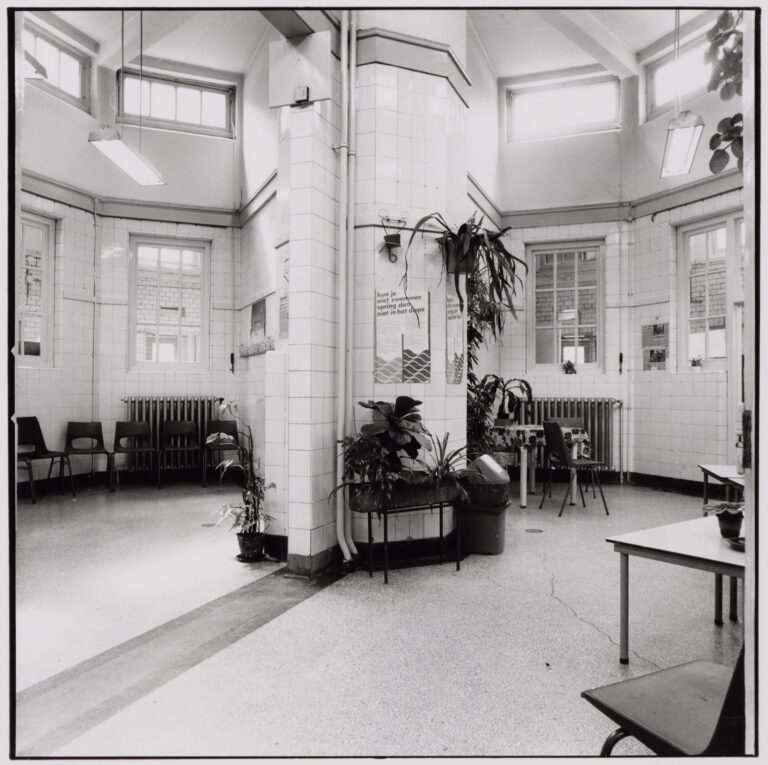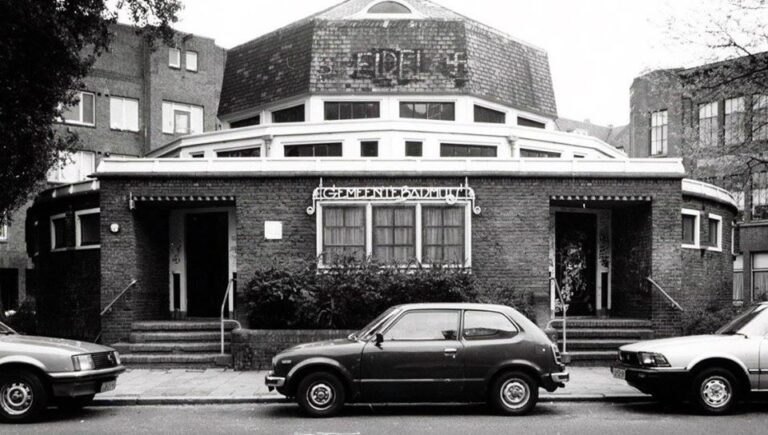About the Badhuis building
The Badhuistheater is proud of the long history of the beautiful building it calls home. In the early twentieth century, and all the way up to the 1980s, many homes did not have baths or showers. Communal bath houses were constructed across the city to meet the needs of the population. The Badhuis on the Boerhaaveplein, now home to the Badhuistheater, was built in 1913.
Designed by renowned architect Arend Jan Westerman, the building has a distinct circular shape around a central chimney. It was the first free standing communal bath house, built in 1913 for this purpose. Its architecture is in the distinct “Amsterdamse school” style. The building is a Dutch National monument.
Westerman designed a number of bath houses during this period, including a very similar building on Diamantstraat 134, which now houses studios for artists, and on Dewittenburghoofd, which was demolished in the 1980s. His work is also visible in iconic buildings such as Het Sieraad on the Postjesweg and the Berlage Lyceum.
Ad Grimmon, another start of the Amsterdamse School style, designed the interior. The separate entrances for men and women are still visible in the building’s current configuration, as are some remains of the changing rooms.
The bath house was still in use into the 1980s. In 1985, the building became a theatre and has functioned as such ever since.
You can hire this historic building for your performance, event, meeting or party.


